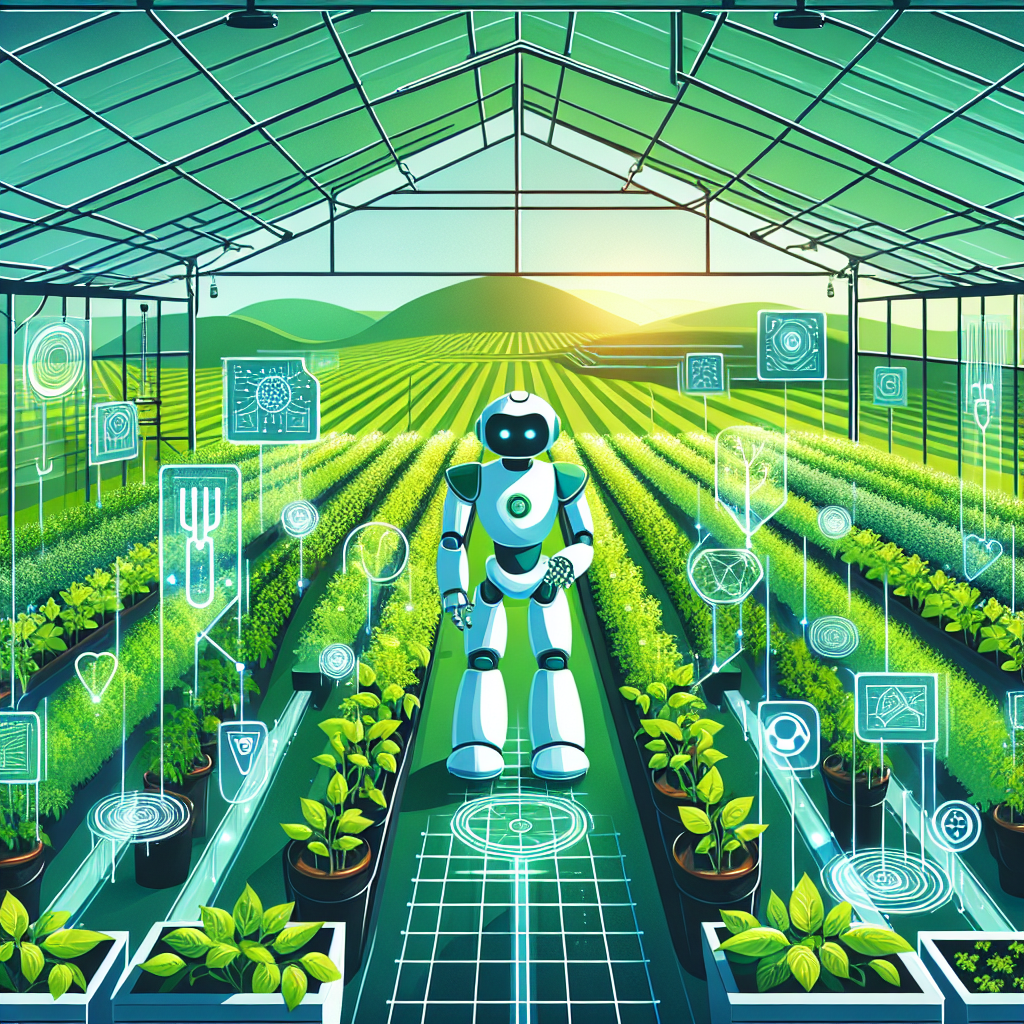AI in Greenhouse Farming: A Game Changer for the Industry
Greenhouse farming has been a staple in the agriculture industry for centuries, allowing farmers to grow crops in controlled environments regardless of the external climate conditions. However, with the advancements in technology, artificial intelligence (AI) is now revolutionizing greenhouse farming, making it more efficient, sustainable, and productive than ever before.
AI in greenhouse farming involves the use of algorithms and machine learning to automate and optimize various processes within the greenhouse, such as monitoring and adjusting environmental conditions, managing irrigation and nutrient delivery systems, and predicting crop growth and yield. By leveraging AI technology, greenhouse farmers can not only increase their crop yields and quality but also reduce their environmental impact and operational costs.
There are several key ways in which AI is transforming greenhouse farming:
1. Monitoring and Control Systems
AI-powered monitoring and control systems can continuously collect and analyze data on environmental conditions within the greenhouse, such as temperature, humidity, light levels, and CO2 levels. By using this data, AI algorithms can automatically adjust the greenhouse’s climate control systems, such as heaters, fans, and vents, to create optimal growing conditions for the crops. This real-time monitoring and control system can help farmers maximize their crop yields while minimizing energy consumption and waste.
2. Irrigation and Nutrient Management
AI can also optimize the irrigation and nutrient delivery systems in the greenhouse by analyzing data on soil moisture levels, nutrient concentrations, and crop growth rates. By using this data, AI algorithms can determine the exact amount of water and nutrients needed by each crop, ensuring that they receive the right amount at the right time. This precision irrigation and nutrient management system can help farmers conserve water, reduce fertilizer use, and improve crop health and yield.
3. Crop Growth Prediction
AI can analyze historical data on crop growth and environmental conditions to predict future crop growth and yield. By using this predictive modeling, farmers can anticipate potential issues, such as disease outbreaks or crop failures, and take proactive measures to prevent them. This predictive capability can help farmers optimize their crop planning, production schedules, and resource allocation, ultimately maximizing their profitability and sustainability.
4. Pest and Disease Management
AI can also help farmers manage pests and diseases in the greenhouse by monitoring for early signs of infestations or infections and recommending appropriate interventions. By using image recognition technology, AI algorithms can identify pests and diseases in crops, enabling farmers to take targeted actions, such as applying pesticides or adjusting environmental conditions, to control them. This smart pest and disease management system can help farmers reduce their reliance on chemical inputs, minimize crop losses, and maintain a healthy growing environment.
5. Labor Optimization
AI can automate repetitive and labor-intensive tasks in the greenhouse, such as monitoring, data collection, and crop maintenance, freeing up farmers to focus on more strategic activities. By using AI-powered robots and drones, farmers can perform tasks such as planting, pruning, and harvesting more efficiently and accurately than manual labor. This labor optimization can help farmers reduce their labor costs, increase their productivity, and improve their overall operational efficiency.
Overall, AI in greenhouse farming offers numerous benefits, including increased crop yields, improved crop quality, reduced environmental impact, and lower operational costs. By leveraging AI technology, greenhouse farmers can optimize their production processes, enhance their decision-making capabilities, and ultimately achieve sustainable and profitable farming operations.
FAQs:
Q: How does AI improve crop yields in greenhouse farming?
A: AI can optimize environmental conditions, irrigation, nutrient delivery, and pest management to create ideal growing conditions for crops, resulting in increased yields and improved crop quality.
Q: Is AI expensive to implement in greenhouse farming?
A: While there may be initial costs associated with implementing AI technology in greenhouse farming, the long-term benefits, such as increased productivity and reduced operational costs, often outweigh the upfront investment.
Q: Can AI in greenhouse farming help reduce environmental impact?
A: Yes, AI can help farmers conserve water, reduce fertilizer use, minimize pesticide use, and optimize energy consumption, leading to a more sustainable and environmentally friendly farming operation.
Q: What are the challenges of implementing AI in greenhouse farming?
A: Some challenges of implementing AI in greenhouse farming include technical complexity, data privacy concerns, and the need for specialized training and expertise. However, with the right support and resources, these challenges can be overcome to realize the full potential of AI in greenhouse farming.

